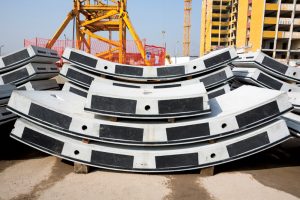Structure Mag By Brian Gettinger, P.E., Brad Watson, P.E. and Mike Shiflett, P.E. Dec, 2019
Turning Underground to Build the Cities of the Future
Tunneling Opens the Door to 21st-Century Infrastructure Development---In the twenty-first century, urban areas continue to grow rapidly. Some of the fastest expansion is in Texas, where the Kinder Institute at Rice University projects that the population of the state’s urban centers may double by 2040. Four of the largest urban areas – Austin, San Antonio, Dallas, and Houston – already have accounted for 85% of Texas’ overall population growth since 2010. Unrelenting growth in these regions stresses the existing infrastructure, particularly linear civil infrastructure: transportation, water, sewer, and stormwater assets. Surging population presents a two-pronged challenge for city planners – they face more demand coupled with shrinking space for construction. Meanwhile, greenfield sites are gobbled up for development, and existing transportation corridors and utility easements are already full.---
Houston, We Have a ProblemWhat if, instead of moving stormwater at the surface, it could be conveyed underground, which would take it through densely populated urban areas with minimal community and environmental impacts? That is precisely what the Harris County Flood Control District (HCFCD) wanted to find out in a study beginning in the summer of 2019. HCFCD, the United States Army Corps of Engineers’ non-federal local sponsor for the region, is responsible for approximately 2,500 miles of bayous and tributaries that drain stormwater from Harris County. HCFCD’s service area encompasses Houston and some of Texas’ fastest-growing suburbs. Tunneling has not been a tool in the agency’s arsenals; so, HCFCD leveraged a grant from the United States Economic Development Administration and local funding from voter-approved bonds to start the process of studying the feasibility of tunneling for stormwater management.
Geotechnical Meets Structural Engineering In Houston, the clays, sands, and high groundwater require ground support systems to be installed before excavation or immediately after excavation. These are much different and more complex systems.
Excavation equipment must use pressurized-face tunneling equipment to control the earth and groundwater pressure that continually acts on the tunnel boring machine, and also varies along the tunnel alignment as different geologic formations are encountered. Earth pressure balance and slurry tunnel boring machines are both pressurized-face tunneling equipment that could be used in Houston depending on the soil and groundwater conditions that are encountered.
Immediately following excavation, the pressurized-face tunnel boring machine erects precast concrete segments for both the initial and permanent excavation support system for the tunnel. The precast concrete segments are typically produced at a manufacturing facility, cured, and then transported to the project site for erection. The segments can also be fabricated on or near the site. Factory production of precast segments results in higher repeatability and quality across large batches than cast-in-place concrete structures, which can be challenging in large and deep tunnels.
More:
https://www.structuremag.org/?p=15313
Structural design of concrete segments used for
tunnels continues to improve, making the segments
more durable and corrosion-resistant.